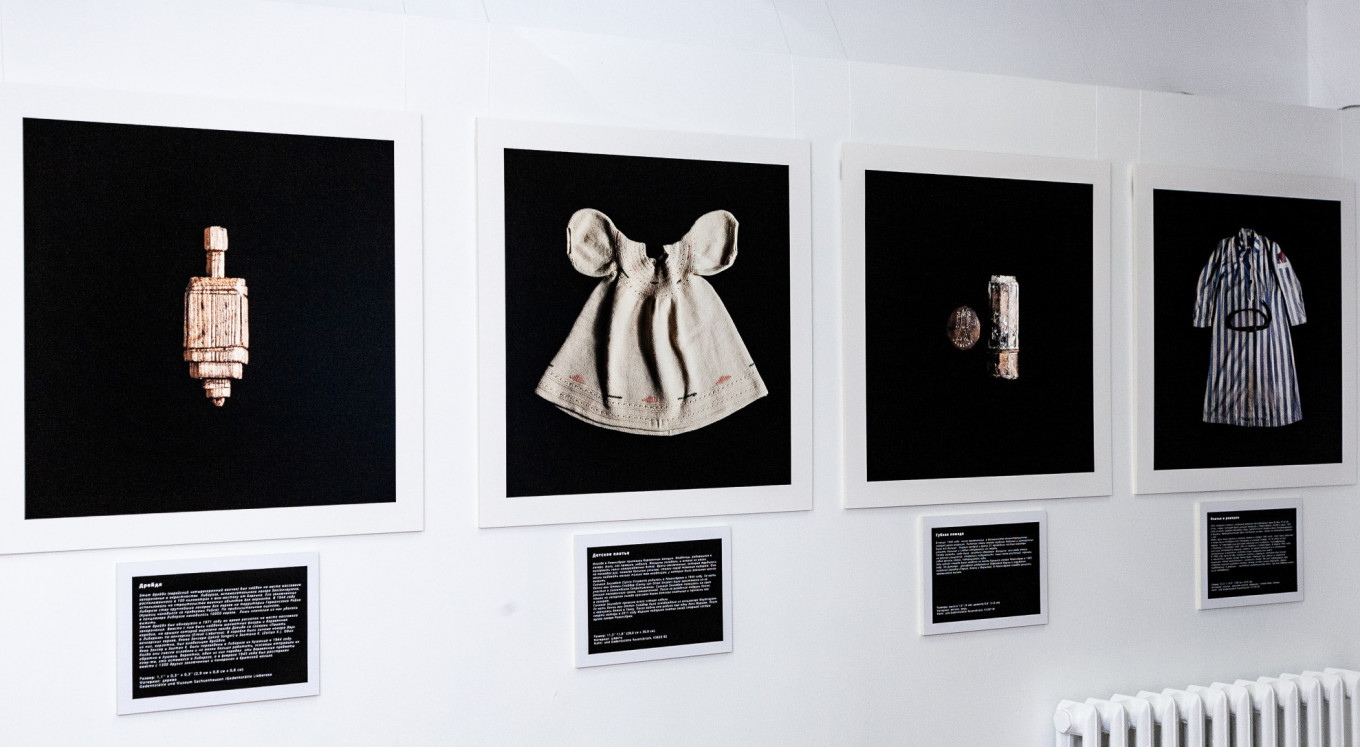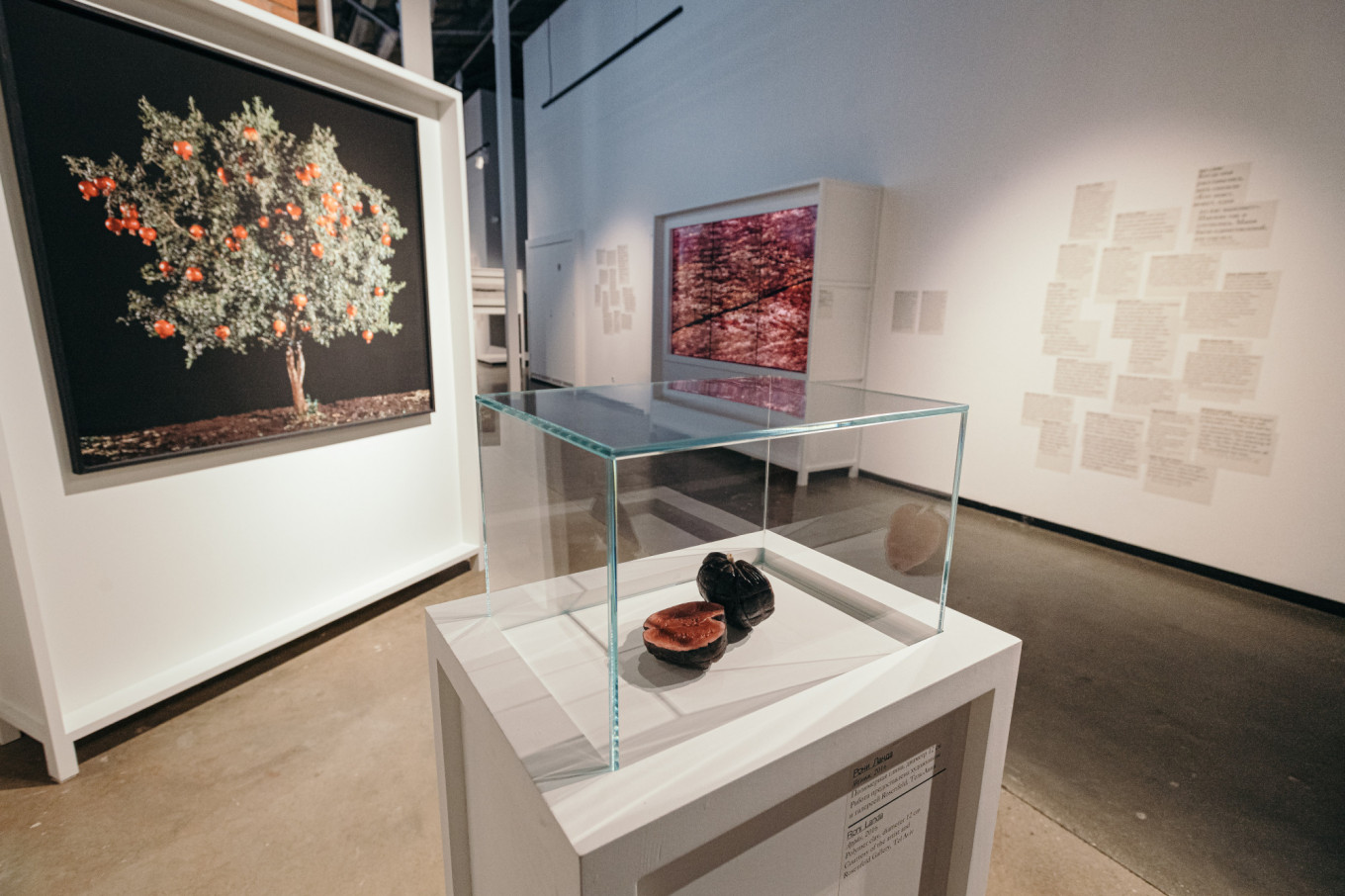This week the world has been commemorating the 75th anniversary of the liberation of the Auschwitz concentration and death camp. In Moscow, the solemn date was observed with the opening of two exhibitions that make the past vividly real with stories, artifacts, and art.
“This Is Personal: Items from Concentration Camps” at Memorial International
Envisioned and realized by photographer Richard Wiesel and historian Robert Sommer, this photo exhibit features items once owned by Holocaust victims, curated from the private Ravensbrück and Sachsenhausen memorial collections. Wiesel renders each item in high-definition on a black background so that the viewer can see minute details: chips and frays, marks of personalization, and visible indicators of passing time in the life of the object and its owner.
In attendance at the exhibit’s opening was Nadya Pantyulina, director of the Gulag-remembrance project “Remember the Dried Flower,” who found herself particularly drawn to a photo of a striped dress and belt. “In the photo there are only clothes, yet you see the person who owned them — her belt getting tighter, how her body fit in this dress. A photo is a flat surface, yet it tells us who this person was. When we see this, what should we feel? What questions should we ask? It’s very important,” Pantyulina told The Moscow Times.

In a comment to The Moscow Times, curator Robert Sommer emphasized his hope that this exhibit would serve as a starting point for young people who are unfamiliar with the history of the Holocaust; that through these “little stories,” young people would gain an emotional understanding of the event, rather than an impersonal one gleaned from the historical narrative taught in many European schools.
When asked about the significance of holding the exhibition in Moscow, Sommer spoke of the desire to bring the project to as many corners of the globe as possible. In addition to Moscow, the exhibit has been shown in Australia, South Africa, the U.S., and Germany.
The exhibition will run until May 30.
5/10 Karetny Ryad. Metro Mayakovskaya. For more information, see the exhibit site.
“(Not) A Good Time for Love” at the Jewish Museum & Tolerance Center –
The exhibit “(Not) A Good Time for Love” is a mixed-media meditation on romantic love during a time of terror. Based on the stories of 11 couples and curated by Katia Krylova, the exhibit blends text with the visual arts — photography, sculpture and painting — to create a multidimensional narrative of love and loss.
Upon entering the exhibit, the viewer is presented with a hard copy of the stories that make up the show. The hall is set up so that the viewer alternates between text displays and art pieces, giving the viewer time to reflect on the narratives and creating a deeply emotional experience.

The curators of the project explained that they wanted to avoid explicit photo and video material that might “theatricalize” memory. Instead, they want to give viewers a visceral sense of the emotions felt by those who lived through the Holocaust.
“For me, the Holocaust is the contents of the suitcase of a girl who soon escapes to Palestine to save herself from the Nazis, or the image of the hands of young 24-year-old girls who are 50 years old in just five minutes from hard work and hunger,” curator Katya Krylova said in a television interview.
The visual artists mirror this non-literal approach in their physical representations of the Holocaust. Artist Nelly Agassi told TV Kultura, “I put opposite meanings in my work. ‘Sее уоu,’ on the one hand, means ‘we will see each other’ there, beyond the horizon. On the other hand, ‘see’ can mean a sea, where you can drown and never see each other again.”
Chief Curator Maria Nasimova told The Moscow Times that she hoped viewers would come away from the exhibit with a sense of empowerment. “We expect viewers to empathize with the heroes of the stories. There are sad and happy stories — exactly what life is. We want them to feel alive and powerful to move forward no matter what.”
The show will run until May 15. All texts and supplementary materials are available in both English and Russian.
11 Ulitsa Obraztsova, Bldg. 1A. Metro Marina Roshcha. For more information, see the museum site.






